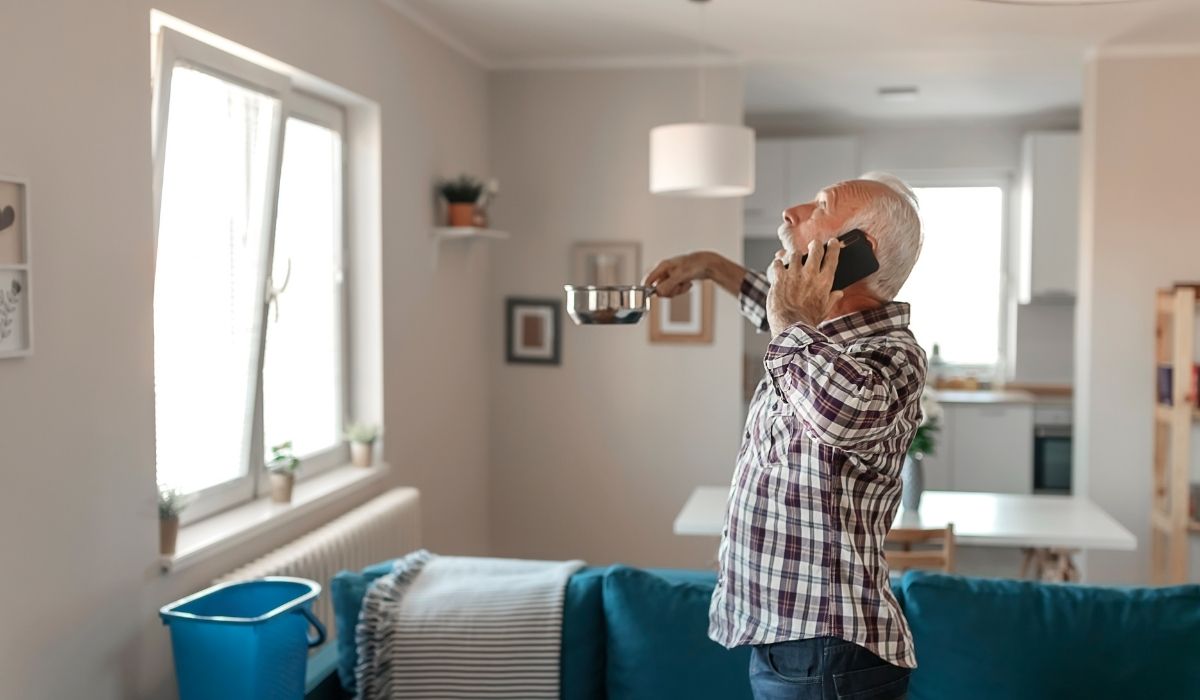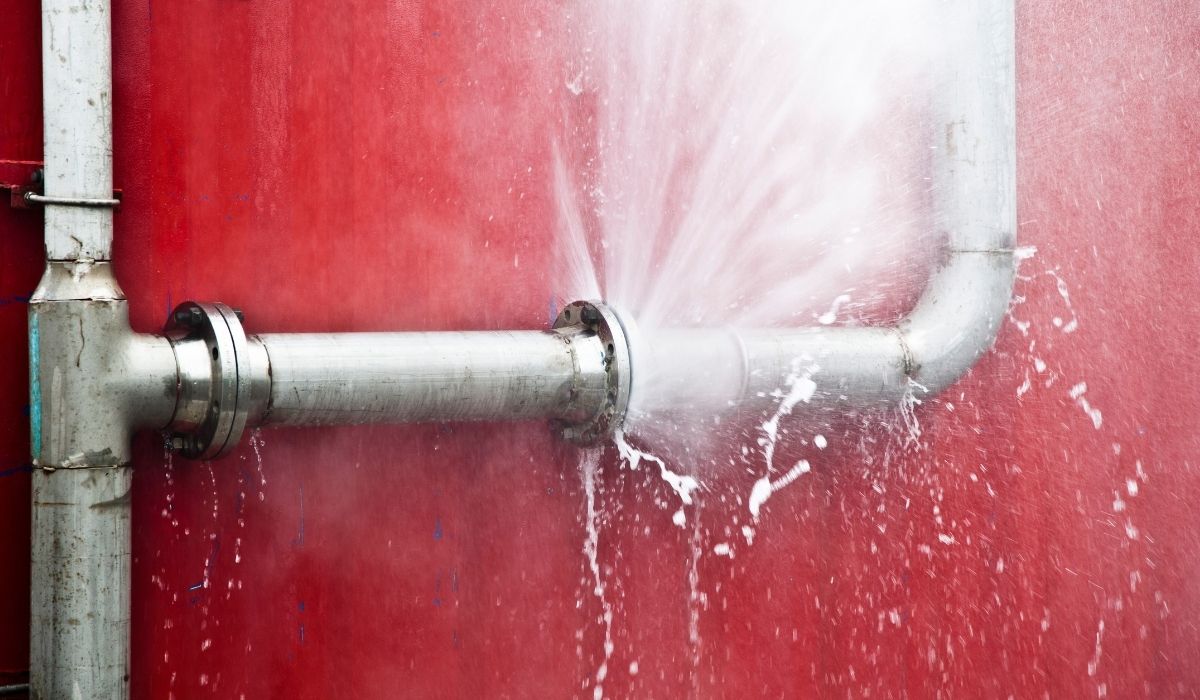How Fast Does Mold Appear After Water Damage Occurs?
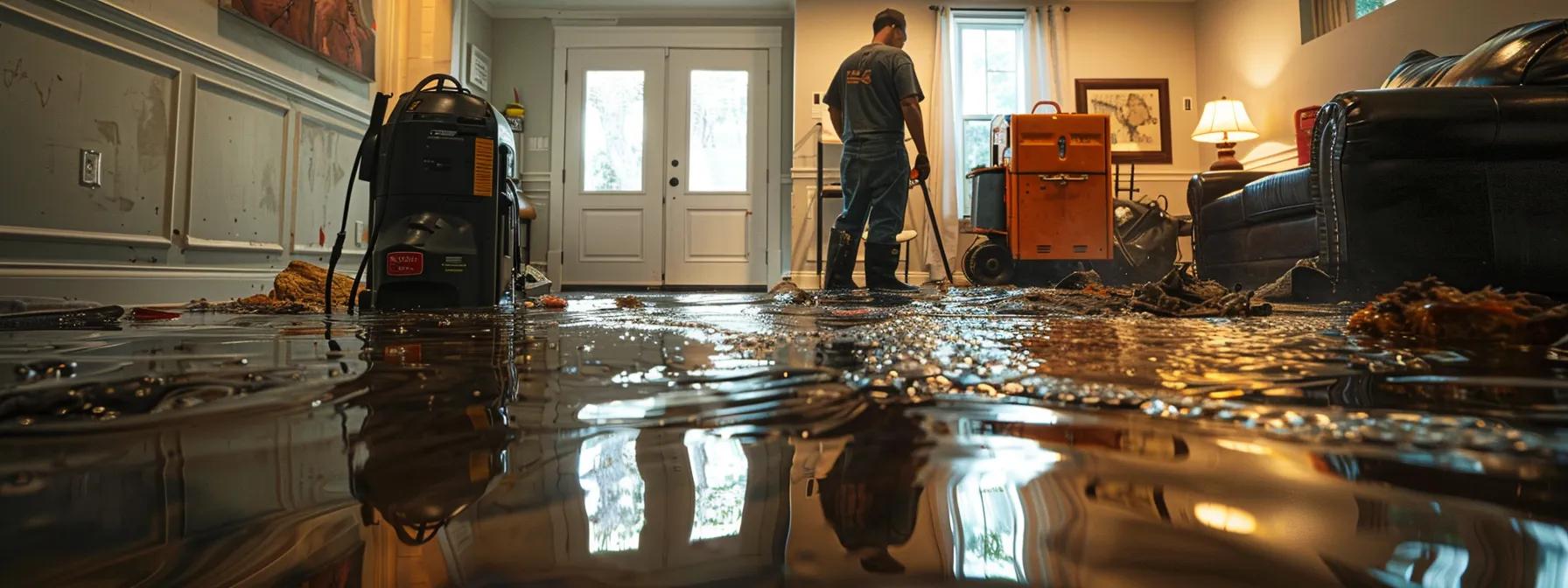
How Quickly Does Mold Grow After Water Damage?
When water damage occurs in a home, it sets the stage for mold to begin its rapid growth, potentially compromising both the structure of the building and the health of its occupants. Mold spores, which are ubiquitous in the environment, can become active within hours after water intrusion. Factors like indoor air quality, high humidity, contaminant particulates, and poor ventilation can accelerate mold colonization. Understanding the growth timeline is essential for homeowners and contractors alike, as early intervention with water extraction, dehumidifiers, and proper insulation can help prevent a full-scale infestation. Several peer-reviewed studies highlight that even mild water leaks can encourage mold development in less than 48 hours, increasing the risk of respiratory issues, allergic reactions, and structural damage.
Homeowners facing water damage often seek immediate advice due to concerns over rising repair costs, potential insurance claims, and the need for urgent mold remediation services. This article explains the timeline of mold growth from the initial spore activation to full-blown colonization. It also details which conditions—such as damp carpet, blocked ductwork, or leaks behind wallpaper—can accelerate this process, and offers guidelines for contractors to mitigate these issues swiftly to maintain structural integrity and protect health. Furthermore, we examine how modern water damage restoration practices, including the use of moisture meters and HEPA vacuums, align with best practices advocated by the Centers for Disease Control and Prevention and other safety bodies.
The following sections outline the mold growth progression, key conditions influencing growth rates, identification techniques during each stage, effective prevention measures, the impact on structural health, and the potential health risks associated with prolonged exposure to mold. By reviewing this comprehensive guide, homeowners and restoration experts will gain a clear understanding of the rapid timeline of mold development after water damage and learn essential steps for timely remediation.
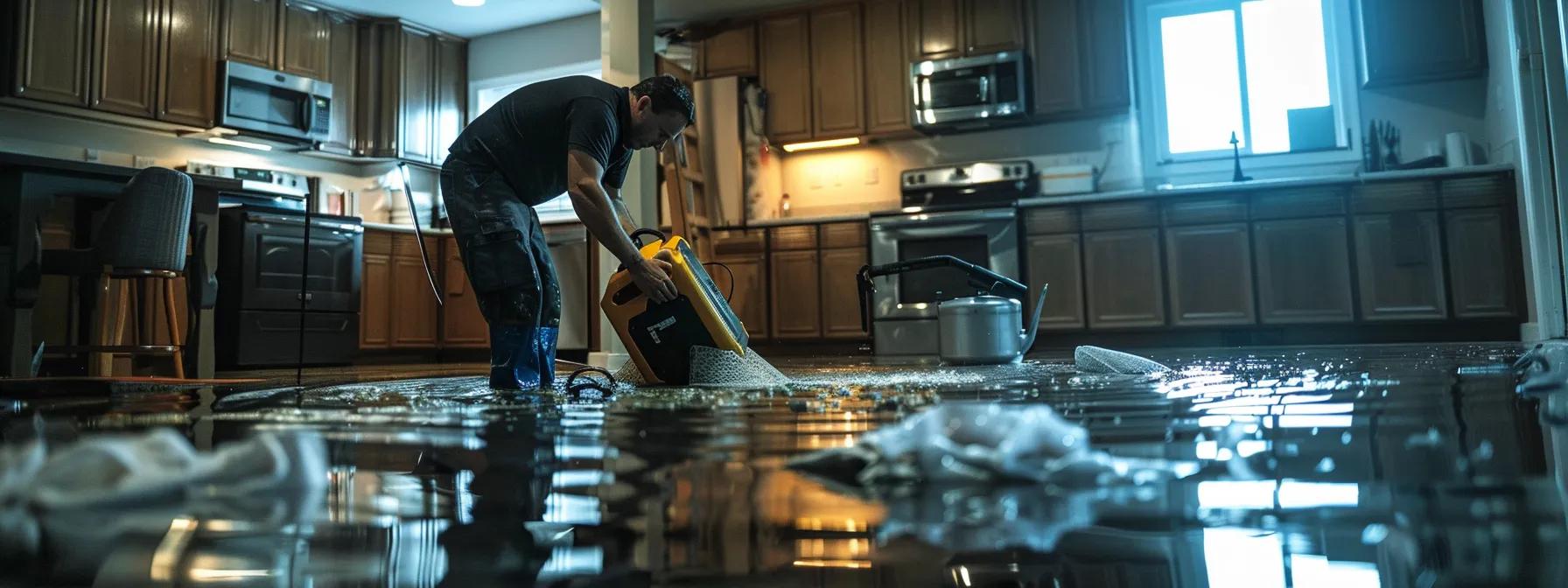
Understanding the Mold Growth Timeline After Water Intrusion

The initial timeline of mold growth after water intrusion is critical for determining the urgency of water damage restoration. Within the first 24 to 48 hours, mold spores—present in every building—begin to germinate once they encounter moisture. At this early stage, the activity of mold spores is mostly microscopic and not visible to the naked eye; however, the spores start consuming organic materials such as wood, carpet fibers, or even drywall material infused with organic compounds. The presence of a water leak, whether from a malfunctioning washing machine, a burst pipe, or heavy rainfall seeping through the roof, creates the optimal environment for mold proliferation.
The Initial 24 to 48 Hour Window for Mold Spore Activation
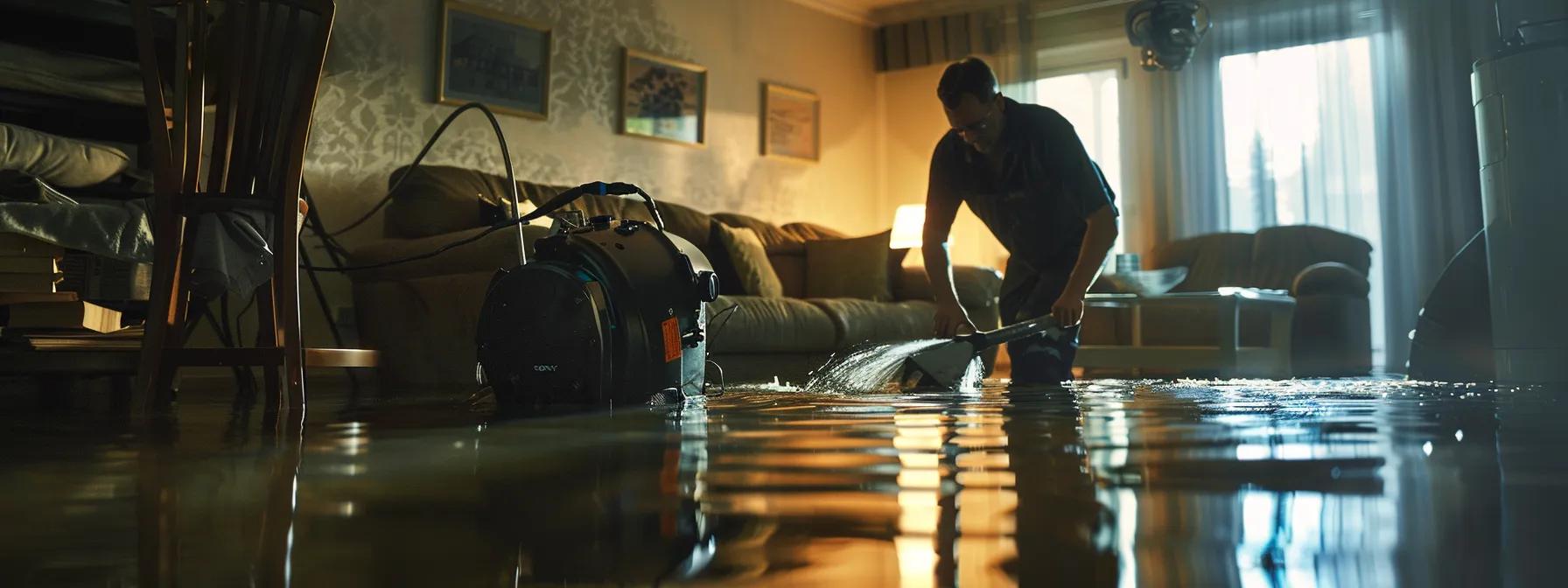
Within the first 24 to 48 hours after moisture exposure, conditions become ideal for mold spore activation. Mold spores, which are naturally dormant, use the available water to initiate metabolic activities. At this juncture, microscopic hyphae begin to form. This process is accelerated in areas with poor air circulation, such as tight spaces behind walls or in attics with minimal ventilation. Particulates and organic material in contaminated water further fuel this process. Studies have shown that under high humidity and warm temperatures (around 77°F or 25°C), mold can begin its growth cycle within as little as 18 hours. These spores satisfy their nutritional needs by digesting organic substances available in building materials, which leads to their rapid multiplication.
Visible Mold Colonies Appearing Within Days to a Week

Once the microscopic colonization phase transitions, mold colonies become visible on surfaces. Typically, within 2 to 7 days after the initial water damage, fuzzy patches in colors like green, black, or white start to appear. The change in appearance is the result of the accumulation of mycelium and the secretion of enzymes by mold, which break down substrates in the building materials. This stage is particularly hazardous because the visible mold indicates that significant colonization has occurred, and extensive spore release may be imminent. The surface area of walls, ceilings, and even floors—especially when carpet or porous materials are present—can become breeding grounds for mold expansion, which not only affects aesthetics but also signals deeper remedial challenges.
Factors Accelerating the Mold Growth Timeline
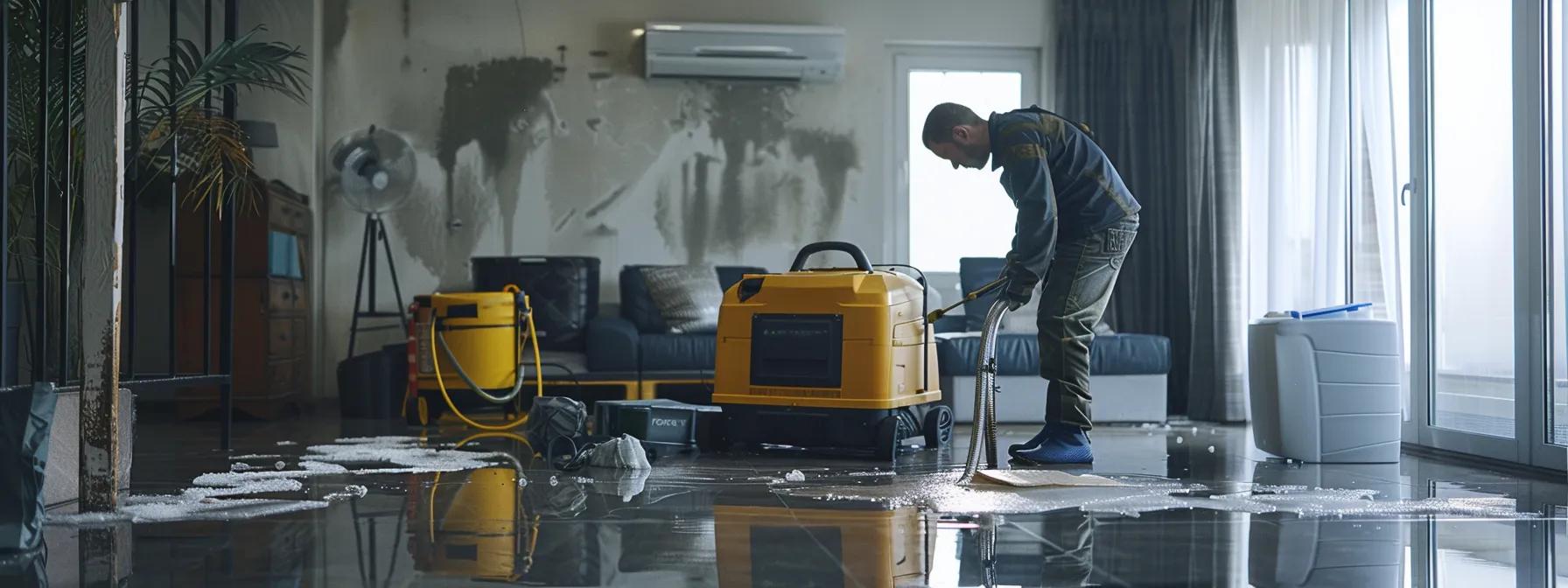
Several environmental and material factors can shorten the mold growth timeline. The temperature plays a critical role, as warmer environments enhance mold metabolism. Humidity levels above 60% contribute greatly to mold proliferation, as they ensure the retention of moisture in building materials like wallpaper and drywall. Additionally, the presence of organic materials, such as wood and dust, serves as nourishment for the mold spores. In scenarios where water extraction is delayed—such as in large-scale floods or hidden leaks behind ductwork—mold growth can accelerate dramatically. The use of dehumidifiers and proper ventilation are key measures to disrupt this progression and reduce the moisture content in affected areas.
How Humidity Levels Influence Mold Development Speed
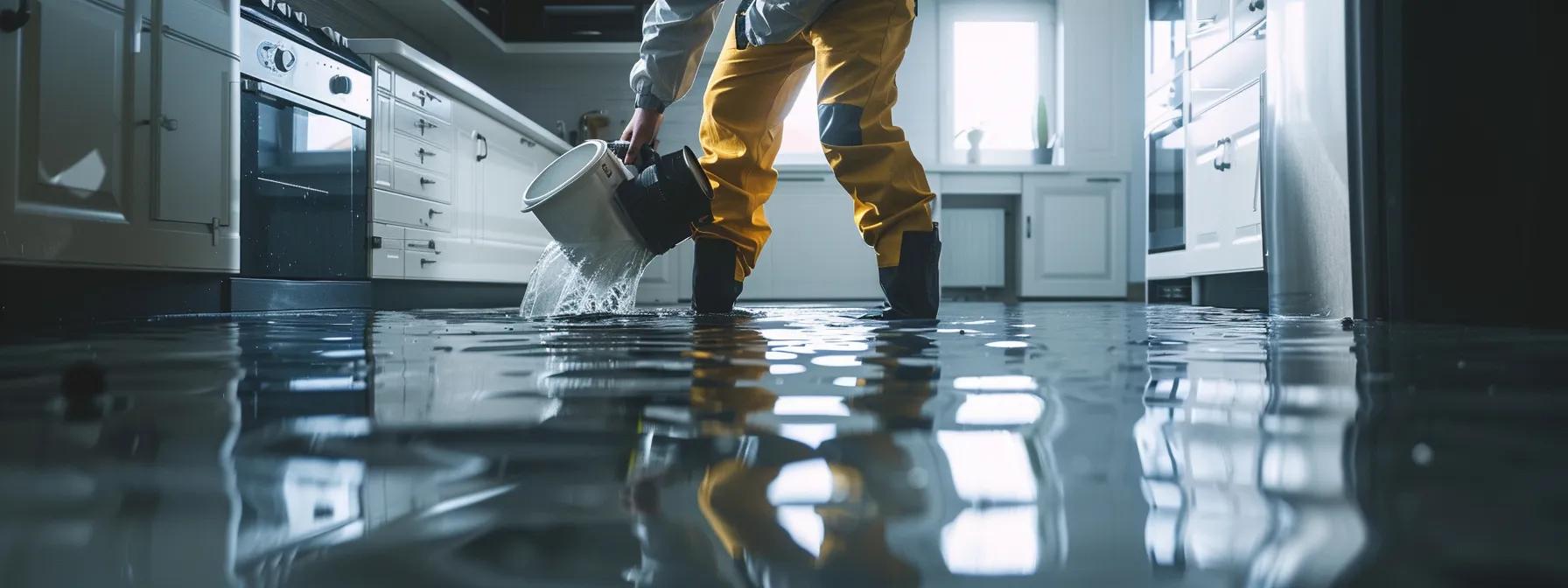
Humidity is among the most influential factors in determining how quickly mold develops after water damage. High indoor humidity not only provides the essential moisture for spore germination but also keeps surfaces damp for extended periods. For instance, a room with 80% relative humidity will see faster mold growth compared to one maintained at 50%. Excess moisture in the air, particularly when combined with warm temperatures, creates a synergistic effect that not only accelerates microbial growth but also contributes to the degradation of building materials. Given the impact on indoor air quality, proper monitoring with hygrometers and timely intervention through dehumidifiers are non-negotiable in the restoration process.
Recognizing Early Indicators Along the Mold Growth Timeline
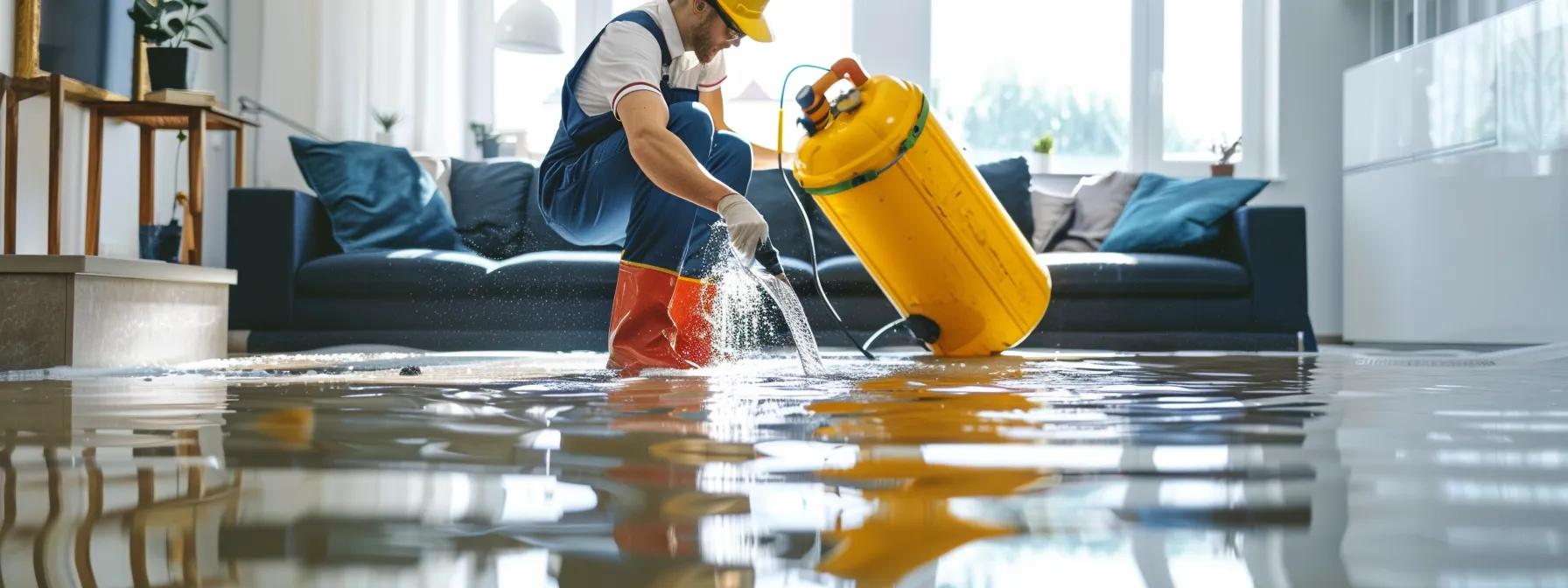
Early indicators of mold growth are subtle yet serve as important warnings. These signs include discoloration on ceilings or walls, a slight musty odor, and even the presence of condensation on surfaces. Homeowners often report noticing a persistent dampness combined with a mild, unpleasant smell after water leaks. Such indicators are especially prevalent in areas with poor ventilation, such as basements or behind heavy furniture. In addition, the accumulation of dust and particulates, combined with dark stains in corners or hidden spaces, signals that mold spores are thriving. Rapid detection through routine inspections and moisture meter readings is crucial, as early intervention can prevent extensive damage and health hazards from prolonged exposure to mold spores and their toxins.
Key Takeaways: – Mold spores can activate within 24 to 48 hours after water intrusion. – Conditions like high humidity, warm temperature, and organic material availability accelerate mold growth. – Early detection is vital to prevent structural damage and health risks.
Key Conditions That Determine How Fast Mold Appears After Water Damage
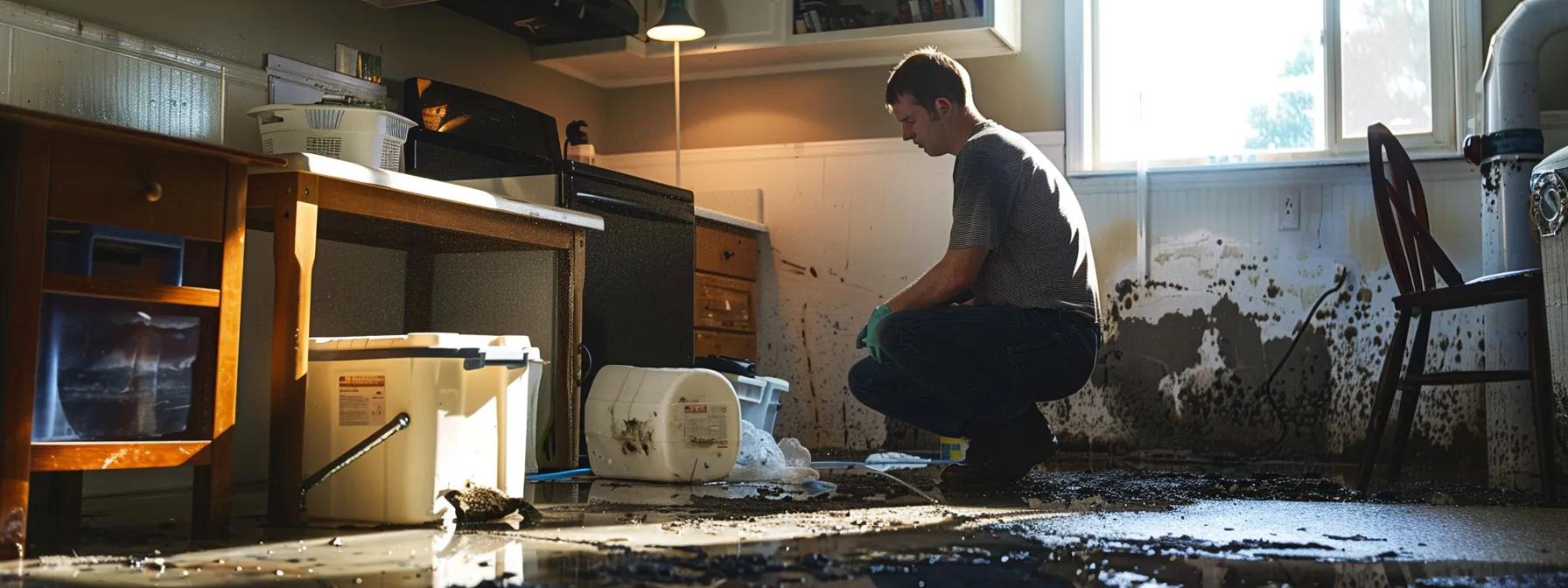
The speed at which mold appears after water damage is not solely contingent on the presence of moisture. Instead, several key conditions interplay to determine the growth rate. Temperature, the availability of organic material, lingering moisture pockets, air circulation, and the type of building material collectively influence mold proliferation. Contractors and restoration professionals must understand these factors to mitigate potential infestations effectively. The interplay of these conditions dictates not only the timeline for visible mold growth but also the potential severity of the infestation. Each condition feeds into the overall ecosystem within the home, making timely intervention crucial.
The Role of Temperature in Mold Propagation Speed
Temperature directly affects mold growth rates. Warm temperatures (typically in the range of 75°F to 85°F) promote rapid metabolic activities within mold spores, accelerating the transformation from dormant spores to active mycelium. Laboratories have documented that under controlled conditions at such temperatures, mold colonies can double their biomass within 12 to 24 hours. Conversely, cooler temperatures slow down these processes, which is why areas of a home that remain cold may initially seem less affected. However, a consistent heat source or a gradual increase in ambient temperature—such as during seasonal changes—can quickly shift a stable environment into an optimal one for mold growth. In water-damaged areas, unchecked heat from a malfunctioning water heater or a poorly insulated attic can significantly reduce the time frame for visible mold emergence. Therefore, maintaining a consistent temperature-controlled environment is essential until proper drying procedures are implemented.
Organic Material Availability Fueling Mold After Water Damage
The presence of organic materials acts as the primary nutrient source for mold growth. Materials like wood, paper, drywall, and even dust accumulated on surfaces provide a rich foundation for mold spores to thrive. Organic matter facilitates enzyme secretion from mold, which breaks down complex molecules into forms that the mold can assimilate. Research has revealed that mold growth can be particularly aggressive on untreated wood and cellulose-based building materials. In water-damaged properties, areas with heavy organic content—such as wooden beams or carpet fibers in old houses—can see mold colonization faster than parts with inorganic surfaces like metal or tile. This nutritional deficiency in non-organic materials explains why mold often clusters in areas with rich organic deposits. For contractors, the remediation plan often includes the removal or treatment of highly organic materials to disrupt the nutrient cycle that molds exploit.
Lingering Moisture Pockets and Their Impact on Growth Rate
Even after apparent drying, hidden pockets of moisture can persist in wall cavities, under flooring, or behind wallpaper. These moisture pockets are a haven for mold, providing a continuous supply of water that fosters prolonged spore activity. In some cases, areas that seem dry on the surface may still harbor hidden dampness that can be detected only with moisture meters. The persistence of moisture results in a prolonged window where mold can multiply even after visible water damage has been addressed. This phenomenon is particularly common in structures with poor insulation or after floods where water may seep under floorboards or behind ductwork. Addressing these hidden reservoirs is critical; otherwise, mold remediation efforts may fail, resulting in recurrent infestations. Advanced drying techniques, such as thermal imaging and targeted dehumidification, are essential tools for contractors to identify and eliminate these moisture pockets.
Air Circulation and Its Effect on Mold Spore Settlement
Proper air circulation is another critical determinant of mold growth. Restricted airflow allows moisture to accumulate on surfaces, creating an environment conducive to microbial development. Rooms with stagnated air or blocked ductwork compound the risk, as air movement is necessary to disperse water vapor and maintain a consistent humidity level. HVAC systems, when not properly maintained, can also become conduits for mold spores, further spreading contamination throughout the building. Effective ventilation systems, the use of exhaust fans in high-humidity areas (like bathrooms and kitchens), and strategic placement of dehumidifiers are essential measures for reducing the risk of mold spore settlement on damp surfaces. By promoting steady and even air distribution, indoor air quality is improved, which directly hinders mold proliferation. Furthermore, ensuring unimpeded airflow can reduce the incubation period of mold by decreasing localized humidity, thus preventing the formation of dense fungal colonies.
Types of Building Materials Susceptible to Rapid Mold Growth
Certain building materials are inherently more vulnerable to mold infestation. Porous materials, such as drywall, carpet, insulation, and untreated wood, can absorb moisture quickly and retain it for extended periods. When water leaks occur, these materials become prime feeding areas for mold. In contrast, non-porous surfaces like metal, glass, or sealed tiles are less likely to support mold growth, although they can contribute to a damp environment if condensation occurs. Moreover, the structural complexity of composite materials—where organic core materials are sandwiched between layers of inorganic facades—can create interstitial spaces that trap moisture and encourage fungal colonization. Contractors must consider the type of materials present during the restoration process and prioritize the removal or treatment of those at highest risk.
Key Takeaways: – Temperature, humidity, and organic material presence are critical factors influencing mold growth speed. – Lingering moisture pockets and poor air circulation prolong the risk of mold infestation. – Certain building materials, especially porous ones, are more susceptible to rapid mold colonization.
Identifying Mold After Water Damage Throughout Its Development Stages
Recognizing mold development after water damage requires a comprehensive understanding of the progression from subtle early signs to fully mature colonies. Early detection is critical for mitigating health risks and structural damage, yet many homeowners may overlook the initial indicators. Expert contractors use a range of techniques—from odor detection to moisture meter readings—to pinpoint the exact point of fungal growth, ensuring that remediation efforts are both timely and precise. The development stages are characterized by changes in appearance, texture, odor, and even in the type of damage inflicted on building materials. Initially, the symptoms are barely noticeable; as the mold matures, it becomes increasingly visible and emits a stronger, musty odor that can indicate extensive colonization.
Subtle Early Signs of Mold Presence Post-Moisture
Early signs of mold are often subtle and may be mistaken for water stains or discoloration due to dirt. At this stage, mold might only appear as a slight variation in color on walls or ceilings. Homeowners might notice faint musty odors that persist even after wiping surfaces clean. These initial signs, although minimal, are a clear indication that mold spores have begun to settle and are consuming available nutrients. The use of sensitive detection equipment, such as moisture meters and infrared cameras, can help uncover hidden moisture and early mold presence in areas that appear normal to the naked eye. For example, research by the American Industrial Hygiene Association (AIHA) highlights that early-stage mold growth can occur in confined spaces behind wallpaper or under carpets, which often goes undetected until it spreads further.
Changes in Appearance as Mold Matures After Water Damage
As mold matures, its appearance becomes more pronounced and easier to identify. Initially translucent and minuscule, the mold spores eventually form fuzzy, colored patches on surfaces. These patches can range in color from green and black to white and even yellow, depending on the species and environmental conditions. The growth pattern may be uneven, often starting in damp, hidden areas before extending to more visible sections. Maturing mold develops a complex network of hyphae—a structure that strengthens as more spores accumulate—leading to thicker, more robust colonies. This maturation stage is a pivotal moment for homeowners, as the visual impact not only signals a need for urgent remediation but also marks a higher likelihood of extensive spore dissemination throughout the home.
Detecting Musty Odors Associated With Fungal Growth
One of the most common and immediate indicators of mold presence is a persistent, musty odor. This smell is often a result of microbial volatile organic compounds (MVOCs) produced by mold as it metabolizes organic material. Although various factors can cause musty odors, in the context of water damage, it is a strong indicator that microbial growth is taking place. Even before visible signs emerge, the detection of such odors by experienced contractors often prompts further inspection. Studies in indoor air quality have demonstrated that even low concentrations of MVOCs can be harmful, leading to respiratory issues and allergies, underscoring the importance of early detection.
Differentiating Mold From Efflorescence or Staining
It is essential to differentiate between mold growth and other phenomena such as efflorescence or simple staining. Efflorescence is typically a crystalline deposit left behind by water containing dissolved salts, which appears as white, powdery residue on masonry surfaces. In contrast, mold is a living organism that exhibits a fuzzy texture and often an identifiable odor. Through careful inspection and testing, specialists can determine whether discolorations are due to biological growth or mineral deposits. Laboratory analysis and on-site inspections using specialized tools can provide definitive answers, ensuring that homeowners receive the correct remediation advice. This distinction not only aids in targeted removal but also in preventing unnecessary costs and disruptions.
Documenting Mold Progression for Remediation Efforts
Proper documentation of mold progression is a vital part of the remediation process. Contractors are advised to take photographs, record moisture readings, and note changes in odor intensity to create a timeline of mold development. This documentation becomes invaluable when formulating a remediation plan and for future reference if additional water damage occurs. Detailed records help in assessing the effectiveness of initial mitigation measures while providing evidence for insurance claims. Maintaining a comprehensive record ensures that even subtle progression is caught early, allowing for quicker, more precise intervention. By charting the mold growth stages, professionals can optimize water extraction processes, select appropriate mold inhibitors, and plan targeted cleaning procedures to reduce the spread of mold spores.
Key Takeaways: – Early signs of mold may be subtle, such as faint discoloration or musty odors. – As mold matures, its appearance becomes more distinct with fuzzy, colored patches. – Differentiating mold from harmless efflorescence is crucial for effective remediation. – Documenting mold progression assists in planning targeted cleaning and water extraction measures.
Effective Measures to Prevent Mold Post Flood Scenarios
In the aftermath of water damage from floods, immediate and effective measures are essential to prevent mold growth. Rapid intervention can minimize structural damage, preserve indoor air quality, and reduce health risks associated with mold spores. As mold can begin to grow within a day after water exposure, taking swift action to remove excess water is necessary. This includes water extraction using industrial-grade pumps, dehumidifiers, and fans to facilitate evaporation. Contractors and homeowners alike benefit from understanding the proper steps needed to create an environment hostile to mold spore proliferation.
Immediate Water Extraction to Halt Mold Nourishment
The first line of defense against mold growth is the immediate extraction of all standing water. Water extraction is critical because prolonged water presence significantly increases the risk of mold colonization. Industrial water extraction pumps and wet vacuums are often employed to remove contaminated water from flooded areas quickly. Efficient water extraction lessens the time surface materials like carpet, drywall, and insulation remain wet, thereby reducing the available moisture that mold spores require to grow. In many cases, prompt water removal is also a condition for insurance claims, making it essential from both a practical and financial perspective. Homes affected by floods can experience rapid degradation of building materials if water extraction is not performed within the first 24 hours.
Rapid Drying Techniques for Affected Areas and Materials
After water extraction, drying the affected areas is the next critical step in preventing mold. Employing rapid drying techniques can significantly reduce the moisture content in materials that have absorbed water. High-powered fans, industrial dehumidifiers, and air movers are often used in tandem to circulate air and remove humidity from walls, floors, and other porous materials. Techniques such as thermal drying or the application of infrared heaters have also proven effective in speeding up the evaporation process. In addition, the use of moisture meters aids in monitoring the drying progress, ensuring that surfaces are completely dry before any reconstruction or repair work is initiated. Rapid drying not only prevents mold growth but also helps curb the development of secondary issues such as efflorescence on masonry surfaces and structural weakening of wood-based materials.
Using Dehumidifiers to Control Moisture and Prevent Mold Post Flood
Dehumidifiers play a pivotal role in maintaining indoor air quality and controlling moisture levels following flood damage. By significantly reducing the relative humidity indoors, dehumidifiers help create an environment less susceptible to mold spore germination. In situations where high humidity persists—often an issue in basements, attics, and enclosed spaces—deploying multiple dehumidifiers may be necessary to achieve optimal drying levels. Controlled studies have illustrated that reducing indoor humidity to below 50% can prevent the rapid proliferation of mold, thereby protecting both personal health and structural integrity. Regular monitoring using hygrometers ensures that the desired moisture levels are maintained until all affected materials have dried completely. This step is indispensable not only for immediate remediation but also as a preventive measure against future water-related incidents.
Applying Mold Inhibitors on Cleaned Surfaces
Once affected surfaces are thoroughly dried, applying mold inhibitors can help prevent future infestations. These inhibitors come in various formulations, including sprays and coatings, and are designed to interfere with mold spores’ ability to adhere to and penetrate surfaces. Mold inhibitors can be particularly useful on porous materials like drywall, carpet, and wood that are prone to moisture retention. Additionally, some products incorporate antimicrobial agents that offer extended protection against fungal growth. It is crucial to follow manufacturer guidelines and ensure that surfaces are fully cleaned before the inhibitor is applied, as residual contaminants may compromise its effectiveness. Contractors often recommend using mold inhibitors in conjunction with regular maintenance and periodic inspections to ensure sustained protection and preservation of indoor air quality.
Ensuring Proper Ventilation to Discourage Fungal Recurrence
Proper ventilation is among the most effective long-term solutions for preventing mold recurrence in water-damaged areas. Adequate air circulation dispels accumulated moisture and helps maintain consistent indoor temperature and humidity levels. Strategies such as opening windows, using exhaust fans in moisture-prone areas like kitchens and bathrooms, and installing ventilation ducts in basements and attics can all contribute to reducing the chances of mold growth. In addition, ensuring that HVAC systems are well-maintained and equipped with filters capable of trapping particulates and spores enhances overall indoor air quality. Professional assessments can identify specific areas where ventilation improvements are needed, thereby reducing the risk of future water damage and subsequent mold infestation. Regular ventilation not only protects structural elements but also safeguards the health of occupants by reducing allergens and airborne contaminants.
Key Takeaways: – Immediate water extraction and rapid drying are essential post-flood measures. – Industrial dehumidifiers and advanced drying techniques significantly reduce moisture levels. – Proper ventilation coupled with mold inhibitors provides long-term protection. – Regular monitoring and maintenance can curtail future mold outbreaks and preserve indoor air quality.
The Connection Between Mold Growth Speed and Structural Integrity
The accelerated growth of mold after water damage presents a serious threat to a building’s structural integrity. As mold colonies expand, they release enzymes that degrade organic materials, weakening the very fabric of the structure. In homes, wooden structures such as beams, floorboards, and even decorative trim are particularly vulnerable. When left unchecked, this degradation can lead not only to visible damage such as warping and crumbling, but also to hidden structural issues that diminish the long-term safety of the building. Understanding how quickly mold can compromise materials is essential for both contractors and homeowners, facilitating timely restoration and preventing costly repairs.
How Quickly Mold Can Compromise Wooden Structures
Wood is one of the most common building materials susceptible to mold colonization due to its porous nature and organic composition. Once mold begins to grow on untreated or inadequately sealed wood, the production of enzymes accelerates its decay. Studies published in the Journal of Building Engineering indicate that in environments with high moisture and warm temperatures, wooden structures can begin to deteriorate within just a few days of mold colonization. The infection weakens the structural integrity of wood by breaking down lignin and cellulose, components critical to maintaining its strength and durability. In severe cases, compromised wooden structures may require complete replacement to ensure safety. This rapid degradation underscores the urgent need for immediate water extraction and restoration procedures to protect wooden elements.
Drywall Deterioration Following Mold After Water Damage
Drywall, a ubiquitous element in modern construction, is highly vulnerable to water and mold damage. Once exposed to moisture, drywall not only becomes a breeding ground for mold but also loses its structural integrity due to the breakdown of gypsum and paper fibers. As mold colonizes the surface, the release of byproducts further accelerates the deterioration process, leading to crumbling, staining, and eventual structural failure. Contractors must assess water-damaged drywall promptly and replace affected sections to prevent further spread of mold. In addition, applying mold-resistant drywall products can serve as a preventive measure in areas frequently exposed to moisture. Regular inspections, coupled with moisture meter readings, are standard practices to ensure that the damage does not escalate into extensive repair needs that compromise home safety.
Impact of Fungal Growth on Insulation Materials
Insulation materials are critical for regulating indoor temperature and energy efficiency; however, they are particularly prone to mold damage when exposed to water. When insulation absorbs moisture, it loses its effectiveness and simultaneously provides nutrient-rich environments for mold spores. This dual consequence can lead to increased energy costs and diminished indoor comfort. Mold-infested insulation not only poses a risk to the building’s integrity but also deteriorates indoor air quality—releasing particulates that may contribute to respiratory issues in occupants. Proper drying, coupled with the use of mold-resistant insulation materials during repairs, is essential to mitigate these risks. Contractors should prioritize the removal of contaminated insulation and follow up with advanced drying techniques to enforce long-term structural integrity.
Assessing Long-Term Structural Risks From Unchecked Mold
When mold growth is allowed to persist, the long-term structural risks become more pronounced and costly. The continuous breakdown of organic materials can lead to hidden damage within walls, floors, and ceilings that may not be immediately evident but compromise the overall stability of the building. In extreme cases, this unchecked growth can lead to the collapse of structural components, posing significant safety hazards. Research has shown that prolonged exposure to moisture and mold can decrease the load-bearing capacity of wooden beams and other critical structures. Professional inspections using tools such as moisture meters and thermal imaging cameras are necessary to determine the extent of damage and to develop a comprehensive remediation strategy. Early intervention is imperative to halt further damage and avoid the extensive costs associated with structural repairs.
Key Takeaways: – Mold rapidly degrades wood, drywall, and insulation, compromising structural integrity. – Prolonged moisture exposure can lead to hidden, severe damage within building components. – Immediate remediation and periodic inspections are critical to maintaining a safe structure. – Advanced restoration practices and mold-resistant materials reduce long-term risks.
Health Concerns Arising From Different Stages of Mold After Water Damage
Mold growth after water damage is not merely an aesthetic or structural issue—it poses significant health risks to occupants in affected buildings. The different stages of mold development each pose unique health concerns, from triggering respiratory issues in the early stages to causing severe allergic reactions and even toxic effects in advanced infestations. As mold proliferates, it releases spores and mycotoxins into the air, contributing to indoor air quality degradation. This deterioration can affect individuals differently; those with preexisting respiratory conditions, allergies, or compromised immune systems are particularly at risk. Awareness and early intervention are critical not only to protect the structural integrity of the home but also to safeguard human health.
Respiratory Issues Triggered by Early Mold Spores
Even in its early stages, mold growth can impair respiratory health by releasing microscopic spores into the air. These spores, when inhaled, may cause irritation to the respiratory tract, leading to symptoms such as coughing, sneezing, and shortness of breath. Scientific studies have linked low-level mold exposure to an increase in respiratory problems, particularly in children, the elderly, and those with asthma or chronic lung conditions. The Centers for Disease Control and Prevention (CDC) have documented cases where even minimal exposure to mold spores resulted in exacerbated respiratory symptoms, thereby stressing the importance of immediate water extraction and proper ventilation after water damage incidents.
Allergic Reactions Intensifying as Mold Colonizes
As mold colonies mature, the allergens they produce become more potent. These allergens can trigger a range of allergic reactions, including skin rashes, nasal congestion, and eye irritation. For individuals predisposed to allergies, the exposure can worsen symptoms over time, sometimes requiring medical intervention such as antihistamines or corticosteroid treatments. Peer-reviewed studies have demonstrated that long-term exposure to mold allergens is associated with chronic inflammatory responses in the respiratory system. The allergic reactions not only disrupt daily activities but can also significantly impact quality of life, making it imperative for homeowners to address any signs of infestation promptly to mitigate long-term health effects.
Potential Toxic Effects From Mature Mold Infestations
Mature mold colonies have the potential to produce mycotoxins, which are toxic secondary metabolites that can have severe health effects upon exposure. These toxins can enter the body through inhalation, ingestion, or skin contact. Research published in environmental health journals has linked mycotoxin exposure to neurological issues, immune system suppression, and even an increased risk of certain cancers. Although not all mold species produce mycotoxins, those that do—such as Stachybotrys chartarum—pose significant health hazards. This underscores the importance of using personal protective equipment (PPE), such as N95 respirators and gloves, during mold remediation efforts. The use of HEPA filtration systems during clean-ups is also recommended to reduce airborne particulates and mycotoxin levels, ensuring safer working conditions for both contractors and homeowners.
Symptoms Worsening With Prolonged Exposure to Mold After Water Damage
Prolonged exposure to mold can lead to a cumulative effect on health, progressively worsening symptoms with each additional day of exposure. Beyond respiratory challenges and allergic reactions, chronic exposure can lead to persistent headaches, fatigue, and even cognitive impairment. Studies in occupational health demonstrate that workers in mold-infested environments often report a decline in overall health, including increased incidents of sinus infections and dermatological issues. This cumulative impact highlights the necessity for thorough and immediate mold remediation following water damage incidents, as well as ongoing monitoring of indoor air quality. It is essential for homeowners to seek professional evaluation and remediation to prevent the escalation of these health concerns.
Safeguarding Occupant Health During and After Mold Remediation
Ensuring the health and safety of occupants during mold remediation requires careful planning and execution. Contractors must adhere to strict guidelines around the use of PPE and controlled containment measures to prevent the spread of mold spores during the cleanup process. Additionally, comprehensive post-remediation testing—including air sampling and surface swabbing—is recommended to verify the effectiveness of the cleanup. This approach not only helps in restoring indoor air quality but also provides peace of mind for the occupants. The use of environmentally friendly disinfectants and proper waste disposal procedures further ensures that the risk of residual mold contamination is minimized. By prioritizing health alongside structural restoration, homeowners can reduce the incidence of mold-related health issues and create a safer living environment.
Key Takeaways: – Early mold exposure can induce respiratory issues and allergic reactions. – Mature mold has the potential to produce mycotoxins, leading to severe health complications. – Prolonged exposure exacerbates symptoms such as headaches, fatigue, and cognitive decline. – Strict safety measures and post-remediation testing are essential to safeguard occupant health.
Frequently Asked Questions
Q: How soon after water damage does mold typically begin to grow? A: Mold spores can begin to germinate within 24 to 48 hours after water damage occurs, especially in environments with high humidity and warm temperatures. It is crucial to address water damage immediately to mitigate the risk of mold infestation.
Q: What are the most common health problems associated with mold exposure? A: Common health issues include respiratory irritation, allergic reactions, asthma exacerbations, and in severe cases, the potential toxic effects from mycotoxins produced by mature mold colonies. Individuals with preexisting conditions are particularly at risk.
Q: How can I distinguish between mold and other water damage signs like efflorescence? A: Mold typically has a fuzzy texture and emits a musty odor, while efflorescence appears as a white, powdery residue resulting from dissolved salts. Professional inspections using moisture meters and air quality tests can help differentiate the two.
Q: What immediate steps should be taken after water damage to prevent mold growth? A: The first step is to extract standing water immediately, followed by rapid drying using dehumidifiers and fans. It is also essential to increase ventilation and, once dry, apply mold inhibitors to affected surfaces.
Q: Are there specific building materials more prone to mold growth? A: Yes, porous materials such as wood, drywall, carpeting, and insulation are highly susceptible to mold growth due to their ability to absorb moisture. Proper maintenance and rapid remediation are key to protecting these materials.
Q: How often should a home be inspected for mold following water damage? A: Homes that have experienced water damage should be inspected immediately after the incident and then periodically during the subsequent weeks. Professional mold inspections are advised, particularly in areas that are less ventilated or have hidden moisture pockets.
Q: Can mold remediation help improve indoor air quality? A: Absolutely. Effective mold remediation, including both removal and preventive measures, can significantly enhance indoor air quality, reducing allergen and spore levels, and protecting the health of occupants.
Final Thoughts
Swift action is critical when water damage occurs, as mold growth can begin within 24 to 48 hours, rapidly compromising structural integrity and human health. Understanding the conditions that accelerate mold is essential for effective remediation. Homeowners and contractors must act quickly with proper extraction, drying, ventilation, and continuous monitoring to prevent mold from establishing deep colonies. By following these detailed guidelines, one can protect a home’s structure and ensure a safe, healthy indoor environment for all occupants.


